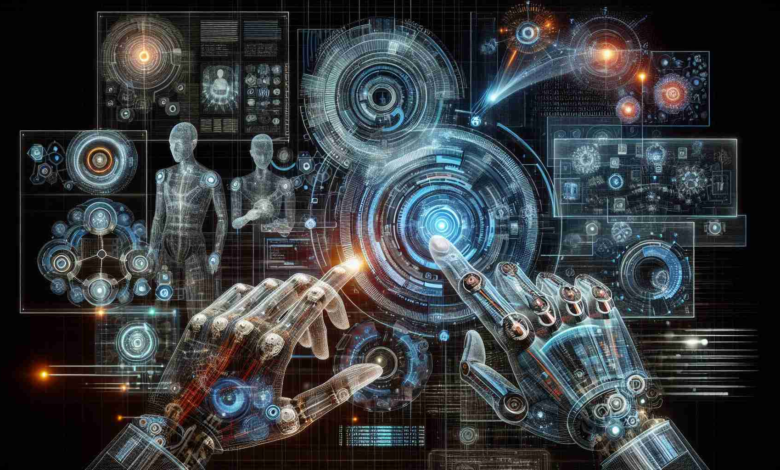Revolutionizing Cybersecurity with AI and Human Expertise

Securily Reinvents Cybersecurity for SMBs
Cybersecurity has become essential for businesses in today’s digital-first economy. Recognizing this imperative, Securily steps in with an innovative approach that combines artificial intelligence with the human intellect of certified professionals to identify weaknesses in digital defenses. They ensure that businesses not only achieve necessary certifications and close deals but also stay fortified against ever-evolving cyber threats.
Compliant with Next-Generation AI Regulations
In response to the forthcoming EU AI Act regulations, Securily proactively positions itself as an ally to US companies. These regulations introduce rigorous compliance standards for AI that includes in-depth risk analysis and human oversight. Securily’s expertise is particularly beneficial for those developing or incorporating generative AI technologies, ensuring that these businesses remain ahead of compliance curves.
Securily: The Continuous Cybersecurity Journey
Securily believes that penetration testing (pentesting) is not a one-time event but the start of an ongoing compliance and security process. Their dynamic services encourage continuous testing and reinforcement of security postures, which is critical amidst the fast-paced evolution of digital applications.
Providing both a strategic roadmap for remediation and an advanced platform for continuous monitoring, Securily stands out by transcending basic compliance to offer a holistic cybersecurity solution that empowers businesses to operate confidently in the digital realm.
Embracing Partnerships for Seamless Compliance
Securily’s recent collaboration with Vanta is emblematic of their dedication to streamlining cybersecurity management. Through this partnership, they promise a seamless experience for customers aiming to integrate AI and large language models into their processes, all while adhering to compliance standards.
As a testament to their foresight, the company remains committed to guiding businesses through the intricacies of cybersecurity, facilitating compliance, and mastering the complexities of contemporary AI regulations. Securily invites businesses to explore its PTaaS platform and take advantage of comprehensive support on their way to surpassing cybersecurity and compliance objectives.
Essential Questions and Answers:
1. Why is a combination of AI and human expertise important in cybersecurity?
AI can process data and recognize patterns at a speed incomprehensible for humans, which is crucial for detecting and responding to cyber threats quickly. However, human expertise is required for contextual analysis, decision making, and strategizing, especially when dealing with complex threats or false positives that AI might flag. The combination allows for a robust, responsive, and adaptive cybersecurity posture.
2. What are some key challenges associated with combining AI and human expertise in cybersecurity?
Integrating AI into cybersecurity workflows can be challenging due to the need for precise programming, ongoing learning, and adaptation to ever-changing threats. Ensuring the AI’s decisions and analyses are accessible and understandable to human experts can be difficult. Moreover, maintaining the balance between automated processes and human judgment so that neither is over-reliant on the other is also a key challenge.
3. What controversies are associated with AI in cybersecurity?
Some controversies include the potential for AI to be used in creating more sophisticated cyberattacks, such as deepfakes or automated hacking tools. Additionally, there are concerns about privacy and data security with AI systems which may have access to sensitive information for analyzing cybersecurity threats.
Advantages and Disadvantages:
Advantages:
– **Scalability**: AI can analyze vast amounts of data, enabling cybersecurity systems to scale with the growing amount of threats.
– **Speed**: AI significantly reduces response time to threats and can work 24/7 without the fatigue that affects humans.
– **Pattern Recognition**: AI is proficient at recognizing patterns indicative of cyber threats, which may go unnoticed by human analysts.
– **Predictive Capabilities**: AI can predict potential vulnerabilities by learning from previous attacks and security breaches.
Disadvantages:
– **False Positives**: AI may generate false positives, leading to unnecessary alerts and diverting attention from actual threats.
– **Complex Integration**: Incorporating AI into existing cybersecurity protocols can be complex and resource-intensive.
– **Adaptation by Attackers**: Cyber attackers could adapt to AI’s detection methods, requiring constant evolution of AI capabilities.
– **Ethical Concerns**: There may be ethical concerns regarding the use of AI, such as bias in decision-making or accountability for decisions made by AI.
Related Links:
For further exploration of the domain of cybersecurity and AI regulations, you may find these links insightful:
– Cybersecurity and Infrastructure Security Agency (CISA)
– European Union
Please note that the links are to the main domains and not to specific articles or subpages. As the topic of cybersecurity is vast and ever-evolving, these resources will provide a starting point for a deeper understanding and latest updates.



